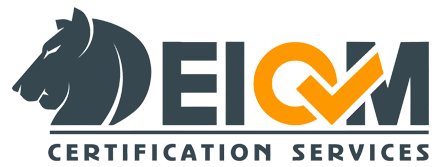ISO 6789 is characterized by stringent precision and accuracy requirements. It classifies torque tools based on their intended application, providing a comprehensive framework that ranges from delicate assembly tasks to heavy-duty industrial applications. This classification ensures that the right tool is used for the right job, minimizing errors and enhancing efficiency.
Introduction
In the realm of manufacturing and assembly, precision is paramount. The torque applied during the tightening of nuts and bolts, for example, plays a crucial role in ensuring the integrity and longevity of products. Enter ISO 6789, the International Torque Standard, a benchmark that has revolutionized the way industries approach torque applications.
History of standard
The genesis of This standard traces back through a fascinating timeline of evolution and refinement. Originally conceived to standardize torque tools, the standard has undergone significant revisions to adapt to the dynamic needs of industries worldwide. Each milestone in its history marks a leap forward in the quest for precision and reliability.
How ISO 6789 Affects Industries
The impact of This standard on industries is profound. From manufacturing processes to assembly lines, adherence to the standard is synonymous with guaranteeing product quality and safety. Companies that embrace 6789 standard find themselves at the forefront of operational excellence, instilling confidence in their customers and stakeholders.
Compliance and Certification
Obtaining ISO 6789 certification is a meticulous process. It involves rigorous testing and calibration to ensure that torque tools meet the standard’s criteria. Businesses that achieve certification enjoy a myriad of benefits, including improved marketability, enhanced credibility, and a competitive edge in their respective industries.
Choosing the Right Torque Tool
Selecting torque tools that comply with ISO 6789 involves careful consideration. Factors such as torque range, accuracy, and application play a pivotal role in the decision-making process. Implementing best practices for torque application ensures that tools are used effectively, maximizing their lifespan and maintaining optimal performance.
Training and Education
Education is a cornerstone of successful This standard implementation. Ensuring that workers are well-versed in torque standards is crucial for maintaining consistency and quality. Various training programs and resources are available to empower personnel with the knowledge needed to navigate the intricacies of torque application.
Case Studies
Real-world examples underscore the tangible benefits of ISO 6789 compliance. Companies that have embraced the standard share stories of improved operational efficiency, heightened product quality, and reduced instances of rework. These case studies serve as inspiration for others considering the adoption of torque standards.
Challenges in Implementing ISO 6789
While the benefits are evident, challenges may arise during the implementation of ISO 6789. Identifying common obstacles and providing solutions is essential for smoothing the transition and encouraging widespread adoption of torque standards across industries.
Future Developments in Torque Standards
The journey of ISO 6789 doesn’t end with its current iteration. Ongoing research and advancements in torque measurement technology hint at future revisions and updates. Staying abreast of these developments is crucial for industries committed to maintaining the highest standards of precision.
Torque Measurement Technology
Innovations in torque measurement devices continue to redefine the landscape. The integration of technology, such as smart torque wrenches and digital torque meters, offers enhanced precision and real-time monitoring. This symbiosis of traditional standards and cutting-edge technology heralds a new era of torque application.
ISO 6789 vs. Regional Standards
Comparing ISO 6789 with regional torque standards reveals both commonalities and differences. Understanding these nuances is vital for businesses engaged in global trade, ensuring that they navigate a landscape where adherence to international and regional standards harmoniously coexists.
Industry Regulations and ISO 6789
ISO 6789 aligns with existing industry regulations, streamlining compliance for businesses. Its compatibility with established norms ensures a seamless integration that enhances rather than hinders existing processes. Embracing ISO 6789 becomes a strategic move for businesses seeking to navigate regulatory landscapes effectively.

